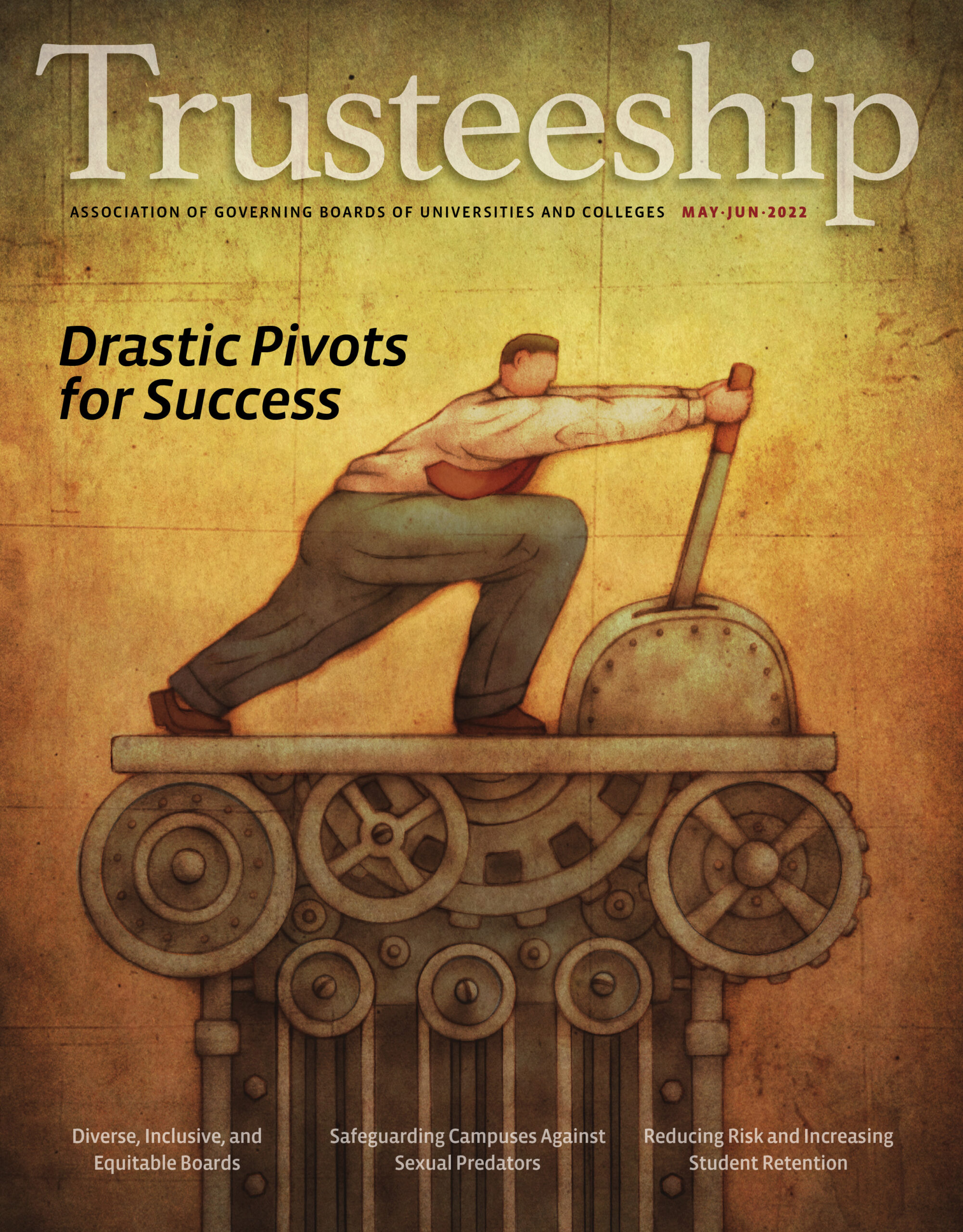Table of Contents
Features
Drastic Pivots for Success
By David Tobenkin
Today’s challenging higher education landscape is forcing colleges and universities to make tough strategic choices in order to adapt, often involving drastic pivots. These pivots typically are forced by increasing financial pressures and a need to rethink institutions’ basic educational models. This article delves into three successful pivots executed by two private institutions and a state system and the hard choices their governing boards faced in confronting institutional resistance to change.
Diverse, Inclusive, and Equitable Boards: A Dozen Ideas to Make Progress
By Cathy A. Trower
The second in a two-part series around board DEI engagement, this article offers a dozen ideas and strategies for confronting and overcoming roadblocks to encourage progress toward a diverse, inclusive, and equitable board. There is no panacea to DEI; achieving true progress toward DEI requires courage, commitment, perseverance, and humility from all individual trustees.
Failure to Act Is Not an Option: Boards Must Help Safeguard Campuses Against Sexual Predators
By Janice M. Abraham
Incidents of sexual abuse are a past and ongoing problem across American colleges and universities. A failure to develop a culture of accountability can have lasting consequences for individuals, campus communities, and trustees personally. Therefore, governing boards must ensure their institutions not only put in place a culture of abuse prevention and reporting, but also follow recommended risk-management practices to protect survivors and help safeguard their campus communities.
Sponsored Content
Where to Begin?: Measuring Portfolio Sustainability Exposures
By Emily Lawrence and Steve Indiveri
Governing boards are vital in ensuring higher education institutions adopt sustainable investing strategies. Approaching environment, social, and governance (ESG) risks and opportunities at the board level allows trustees to explore how intentional ESG integration aligns endowment management with organizational values and supports stakeholder engagement.
Reducing Risk and Increasing Student Retention Through Comprehensive Behavioral Intervention and Threat Assessment Services
By Tim Cason and Makenzie Schiemann
In a time when higher education institutions are focused on student and employee retention, and are facing increased scrutiny and expectations around creating safe environments, it is critical that institutions have well-trained and resourced behavioral intervention teams (BITs). High-performing BITs will create a safer community and aid in increasing student and employee retention and success.
Departments and Columns
On My Agenda
Strategic Planning vs Strategic Thinking
By Henry Stoever
News in Brief
A sampling of national higher education news
- New Editor-in-Chief, Trusteeship Magazine
- Upcoming Institutes for Board Chairs and Chief Executives
Legal Standpoint
Hot Topics in Higher Education Law
By Steve Dunham
From the Board Chair
Aligning Strategic Plans with Outcomes
By Greg Bigman
Forum
Choosing a Board Chair
By Richard Chait
Foundations of Consequence
Student-Focused Philanthropy: How Advancement Programs are Supporting Equitable Student Success
By David Bass
Focus on the Presidency
Transforming Morgan State into an R1: Very High Research University
By David K. Wilson
A Question For…
Shannon McCambridge
What Is Key to a New President’s Success?
By Cristin Toutsi Grigos


